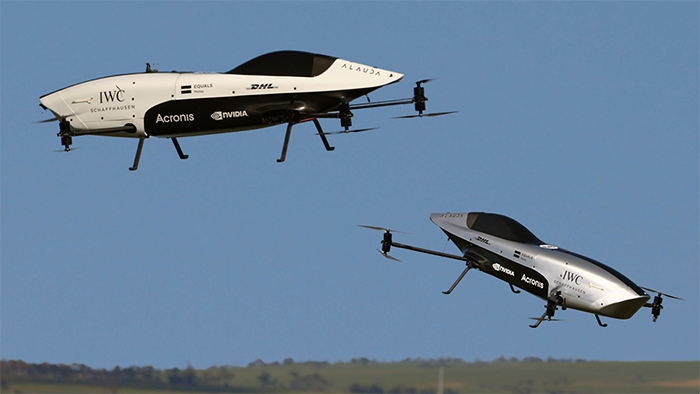Alauda Aeronautics, the creator and technical team behind Airspeeder, the world’s first racing series for flying electric cars has made another historic first.
Test flights that include two full-scale electric flying racing cars have been successfully completed in an undisclosed location near Adelaide, South Australia. In doing so, offering a glimpse of what a duel-style race will look like in the forthcoming EXA, remotely-piloted racing series.
These dual-racecraft flights follow successful race-trials in the deserts of South Australia in June and the release of footage that has captivated audiences across the globe.
The forthcoming EXA race series presents the very first iteration of electric flying car racing. It will feature remote-pilots drawn from motorsports and civil and military aviation backgrounds in races that will serve as the feeder for crewed Airspeeder electric flying car Grand Prix, set to take place in 2022.
These historic first flights refine the technology that isn’t just underpinning an entirely new motorsport but will also drive the eVTOL (electric vertical take-off and landing) mobility revolution – an industry that is rapidly growing and is predicted by Morgan Stanley to be worth $1.5 trillion by 2040.
The technical team Alauda Aeronautics is drawn from leaders in Formula 1, performance automotive and aviation. This includes Boeing, Brabham, Mclaren, Jaguar Land Rover and Rolls-Royce. Together they have quickly advanced through three major iterations of the world’s first flying electric race-cars, culminating in the Mk3, a full-scale remotely piloted race-craft.
The development of key safety systems is essential to the operation of the sport and the wider industry. This includes the creation of a suite of technologies known as the ‘Virtual Forefield’, with these flights providing the first real-world trial of collision avoidance systems driven by latest LiDAR and Radar technologies.
The flights also provided vital aerodynamic insight to engineers who were able to prove the flight stability of the world’s only racing octocopters in close proximity at significant speed and with the application of aggressive turning angles. Indeed, the maneuverability and rapid hairpin turning potential has been compared to that of an F1 car but with the added vertical dimension.
This means racing is made more exciting through close but ultimately safe distances between race-craft. Indeed, racing serves as the perfect place and a space for an industry to prove its technology, refine safety systems and build global public acceptance for a form of mobility with the potential to liberate cities from congestion and that is already transforming global logistics including the distribution of medical supplies to remote locations.

COMMENTS